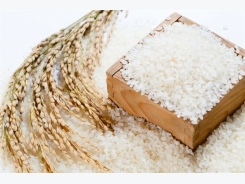Vietnam warned it may lose market share in pepper

Vietnam is in the peak harvest season for the 2018 pepper crop, but sharp price falls and market problems all signal a challenging year for the pepper industry.
Vietnam is a big pepper exporter
Experts say the oversupply has been a problem for the pepper industry over the last two years.
Meanwhile, importing countries are setting higher requirements, thus raising pessimism about the future of the industry.
International media reported that the US Food & Drug Administration (FDA) is considering raising the permitted MRLs (maximum residue level) of some active elements, including Arcrimnathril, Tricyclazole and Metalaxyl, on pepper imports from Vietnam.
In late 2016, the EC planned to raise the MRL of Metalaxyl on imported pepper from 0.1 ppm to 0.05 ppm.
However, in the face of opposition from Vietnam and India, the EC finally decided to maintain the Metalaxyl MRL at 0.1 ppm until the end of 2018 after negotiations with Vietnam’s Ministries of Agriculture & Rural Development (MARD) and Industry & Trade (MOIT).
What will happen after 2018? A report from ESA (European Spice Association) found that only 17 percent of 799 black pepper samples imported into the EU had an MRL below 0.05 ppm.
If the EC applies the new MRL, more than 80 percent of Vietnam’s pepper exports to the EU will meet difficulty.
Meanwhile, the US, India and UAE are the three biggest export markets for Vietnam’s pepper. If Vietnam cannot control the quality of exports, it may lose its biggest markets.
In 2017, Vietnam exported 38,861 tons, worth $221.2 million, to the US, a decrease of 1.9 percent in quantity and 35.4 percent in value compared with 2016. The country also imports pepper from other markets, including Brazil, Indonesia and Ecuador.
In 2017, Vietnam exported 38,861 tons, worth $221.2 million, to the US, a decrease of 1.9 percent in quantity and 35.4 percent in value compared with 2016. The country also imports pepper from other markets, including Brazil, Indonesia and Ecuador.
Similarly, pepper exports to the EU have decreased by 0.3 percent in quantity and 39.9 percent in value.
Agricultural experts said pepper growers need to change their cultivation practices and apply high tech farming to produce safe, quality products for sustainable development.
An analyst said that farmers had expanded the pepper growing area too quickly, which did more harm than good, leading to overproduction.
MARD plans to develop 50,000 hectares of pepper growing area by 2020. However, the actual total growing area had already reached 130,000 hectares by 2017.
A senior executive of Phuc Thinh Production said it would be better for Vietnamese enterprises to focus on making and exporting safe products and to diversify its export markets.
Có thể bạn quan tâm
Phần mềm

Phối trộn thức ăn chăn nuôi

Pha dung dịch thủy canh

Định mức cho tôm ăn

Phối trộn phân bón NPK

Xác định tỷ lệ tôm sống

Chuyển đổi đơn vị phân bón

Xác định công suất sục khí

Chuyển đổi đơn vị tôm

Tính diện tích nhà kính

Tính thể tích ao hồ



 VFA: Bright outlook for 2018 rice exports
VFA: Bright outlook for 2018 rice exports  Japonica to become Việt Nam’s leading export rice
Japonica to become Việt Nam’s leading export rice